Say Goodbye to Brittle, Frayed Hair
Ever noticed your hair looking frizzy, dry, and refusing to grow past a certain length—no matter how many hair masks you try? Those annoying, frayed ends might be split ends, one of the most common hair health concerns.
Split ends (or trichoptilosis) may seem like a minor cosmetic issue, but if left untreated, they can sabotage your entire hair care routine. They lead to hair breakage, dullness, and a rough texture that no styling product can fully mask.
Why You’ll Love This Guide
- Expert-backed medical and natural remedies
- Easy DIY home treatments with real results
- Long-term prevention tips to stop split ends for good
Let’s dive deep into the causes, cures, and prevention methods that will leave your hair smoother, stronger, and shinier—without cutting it all off.
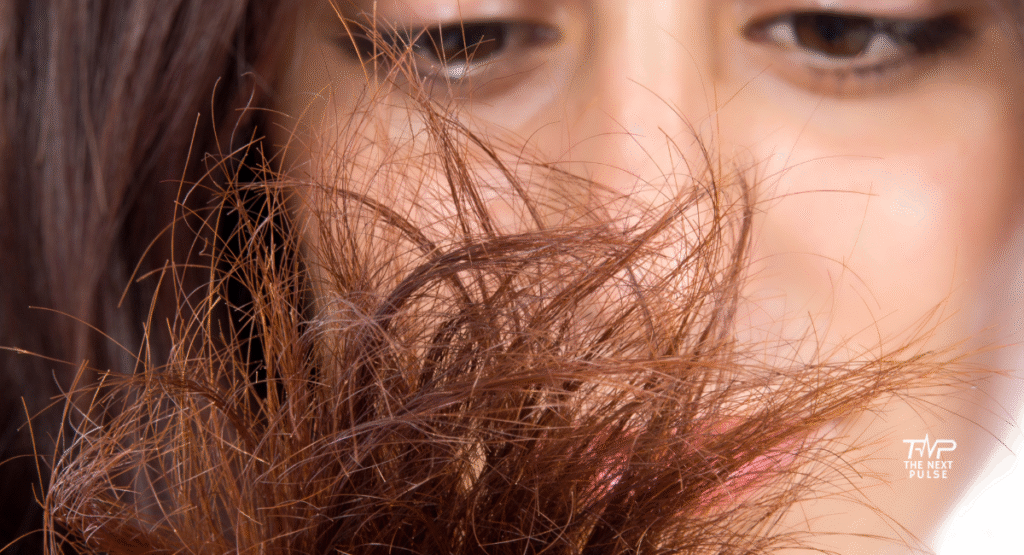
What Are Split Ends?
Definition & Appearance
Split ends occur when the protective outer layer of the hair shaft (cuticle) becomes damaged or stripped away, causing the hair to split into two or more fragments at the tip.
Common signs include:
- Feathered or Y-shaped ends
- Frizzy texture at the bottom of strands
- Hair that tangles easily or feels dry
- Noticeable thinning at the ends
Causes & Triggers
Understanding what causes split ends helps you avoid them in the first place. Key contributors include:
| Trigger | How It Affects Hair |
| Frequent heat styling | Weakens hair cuticle and dries strands |
| Chemical treatments (dyeing, perming) | Damages hair structure |
| Over-washing or harsh shampoos | Strips natural oils |
| Rough towel drying or brushing | Causes physical damage |
| Environmental stressors (UV, pollution) | Degrades keratin and moisture barrier |
| Nutritional deficiencies | Impairs hair strength from within |
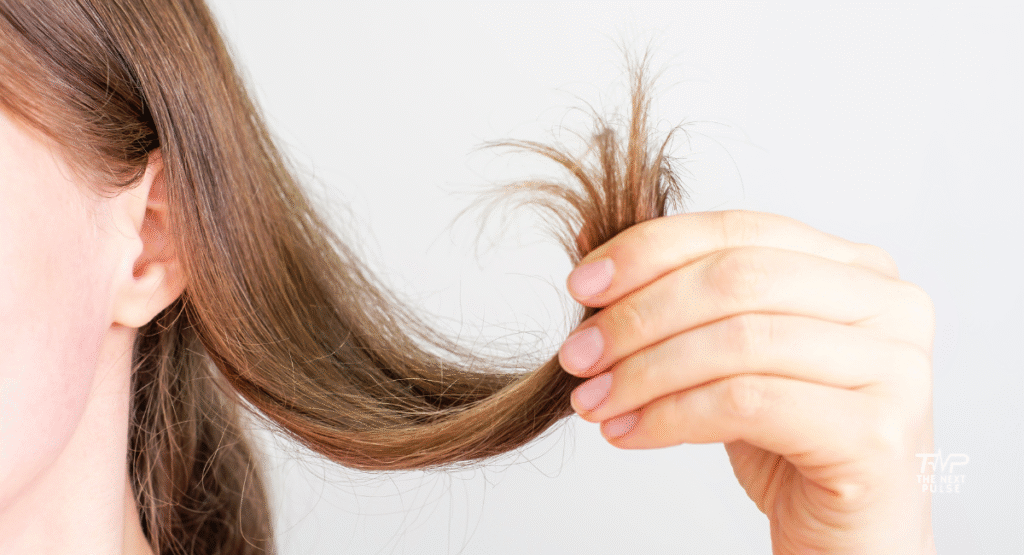
Medical & Professional Treatments for Split Ends
If your split ends are severe or recurring, a dermatologist or trichologist may recommend the following:
1. Professional Hair Trimming
- Effectiveness: Immediate removal of split ends
- Frequency: Every 6–8 weeks
- Pro Tip: Ask for “dusting” if you’re trying to maintain length
2. Prescription Hair Strengthening Treatments
- Products with minoxidil, biotin, or keratin-based serums
- Improve follicular health, which enhances new growth
3. In-Clinic Hair Restoration Procedures
- Keratin smoothing treatments: Seal the cuticle and reduce frizz
- PRP (Platelet-Rich Plasma): Stimulates scalp and follicle health
- Laser therapy: Supports healthier regrowth over time
⚠️ Precaution: Always consult a certified professional to ensure the procedure suits your hair type and condition.
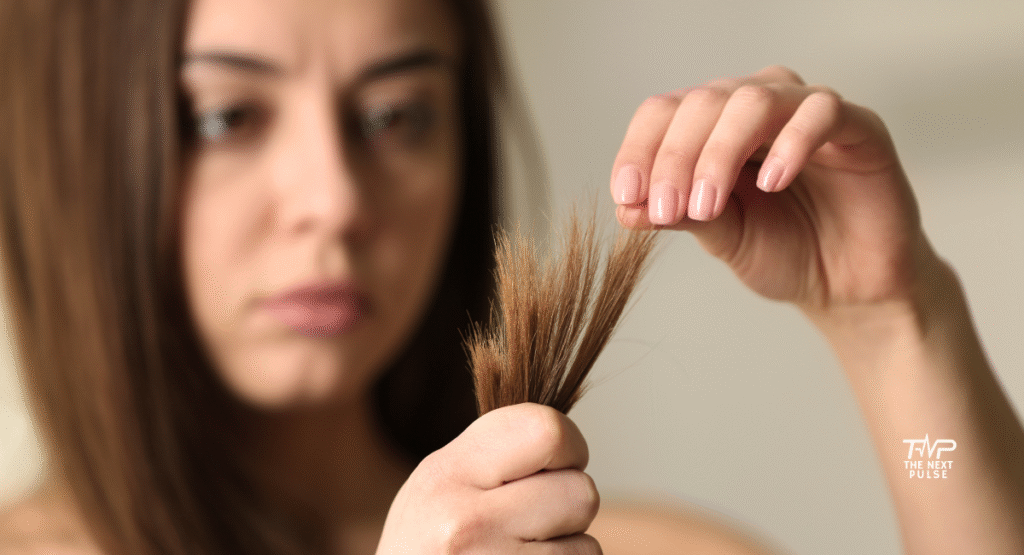
Natural Home Remedies for Split Ends
Skip the scissors with these gentle, effective, and science-backed home remedies:
1. Coconut Oil & Honey Mask
- Why it works: Deep moisturizes and repairs protein bonds
- How to use: Mix 2 tbsp coconut oil with 1 tbsp honey, apply from mid-lengths to ends, leave for 30 minutes, rinse
- Frequency: 2x a week
- Expected Results: Noticeably smoother ends within 2–3 weeks
2. Aloe Vera Gel
- Why it works: Rich in enzymes and amino acids that repair dead skin cells on the scalp
- How to use: Apply fresh aloe gel directly to ends, leave for 20 minutes, rinse
- Bonus Tip: Mix with olive oil for added nourishment
3. Egg Yolk & Olive Oil Treatment
- Why it works: Egg yolk contains lecithin and protein that strengthen hair
- How to use: Whisk 1 egg yolk with 2 tbsp olive oil, apply for 20 minutes, wash with mild shampoo
- Frequency: Weekly
4. Avocado Hair Butter
- Why it works: Packed with vitamins A, D, E, and B6
- How to use: Mash one ripe avocado, mix with 1 tbsp yogurt, apply to ends, leave 30 minutes
5. Apple Cider Vinegar Rinse
- Why it works: Balances scalp pH and seals cuticles
- How to use: Mix 2 tbsp in 1 cup of water, pour over hair post-wash, let it sit for 5 minutes, rinse
Hair Care & Lifestyle Tips to Prevent Split Ends
Daily Hair Care Habits
- Use a wide-tooth comb on wet hair
- Avoid tight hairstyles that stress the ends
- Switch to satin pillowcases to reduce friction
- Use a heat protectant spray before styling
Nutrition for Stronger Hair
- Incorporate biotin, omega-3 fatty acids, vitamin E, and protein-rich foods
- Stay hydrated to maintain internal moisture balance
Pro Tip from Dermatologists
“Split ends don’t heal—prevention is the best cure. Protect your cuticle with regular conditioning and minimal heat exposure.” – Dr. Saira Malik, Board-Certified Dermatologist.
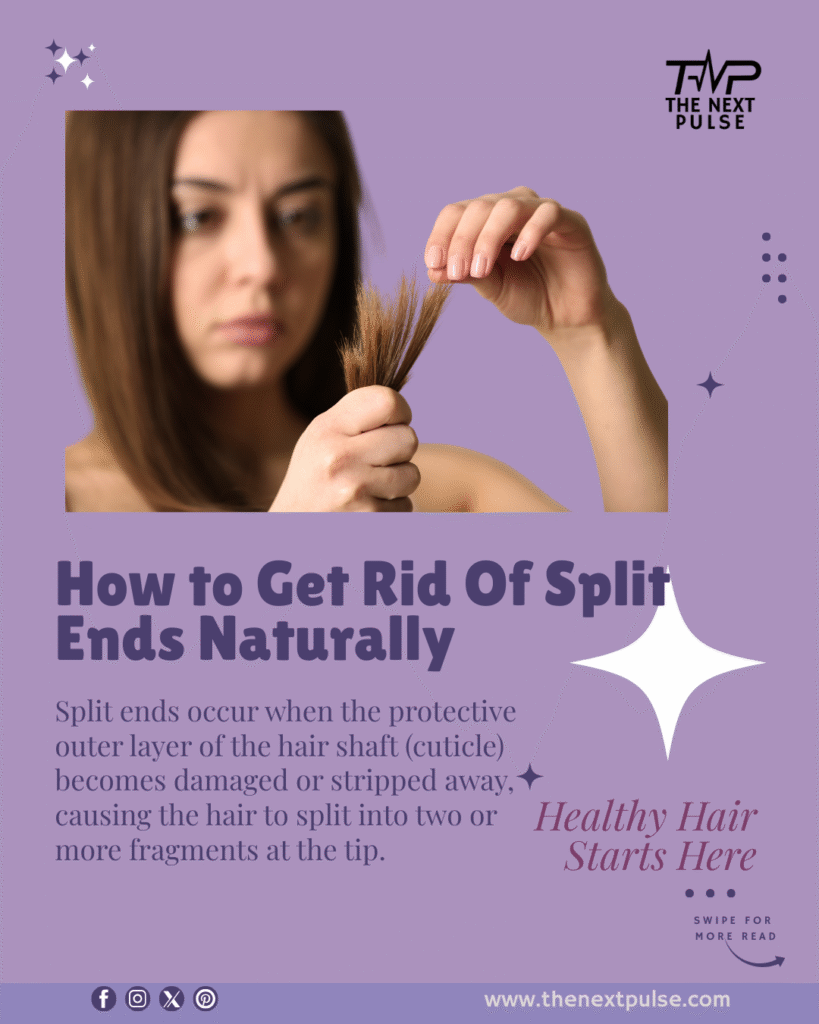
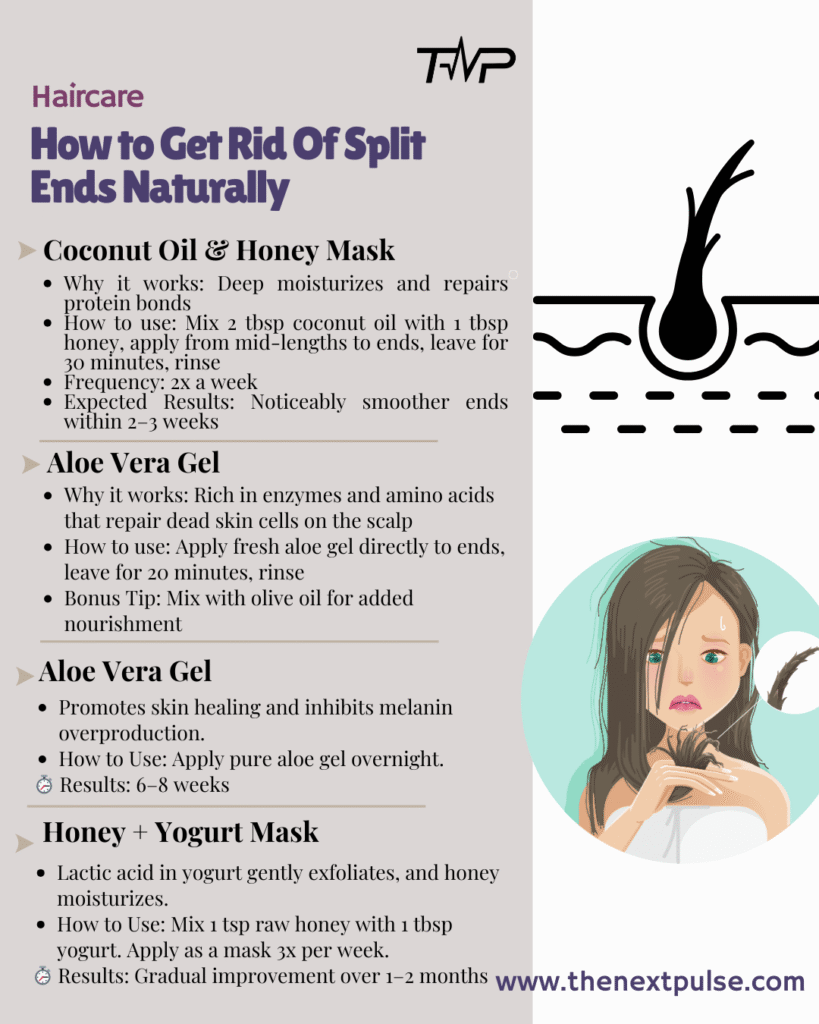
FAQ
1. Can stress cause split ends?
While stress doesn’t directly cause split ends, it can lead to hormonal imbalances that affect overall hair health, making it more prone to breakage.
2. Do split ends stop hair growth?
Not exactly. Split ends don’t prevent new hair from growing at the root, but they cause breakage that reduces visible length and volume.
3. Should I cut my hair if I have split ends?
Yes, trimming is the only way to permanently remove split ends. Home remedies can help minimize and prevent them but won’t “heal” existing splits.
4. How often should I oil my hair?
2–3 times a week is ideal for dry or damaged hair. Use light oils like coconut, almond, or argan for best absorption.
5. Can I color my hair if I have split ends?
It’s best to address split ends first, as coloring can worsen dryness. Opt for ammonia-free or semi-permanent dyes and follow with intensive conditioning.
Final Thoughts: Smooth Ends Start with Smart Care
Split ends are a clear signal that your hair needs a little more TLC. Whether it’s through regular trims, nourishing home masks, or adjusting your daily routine, consistent care makes all the difference.
Start today: pick one home remedy, schedule a trim, and begin protecting your strands from further damage. For persistent split ends, consult a certified dermatologist or trichologist to explore deeper solutions tailored to your hair type and scalp condition.
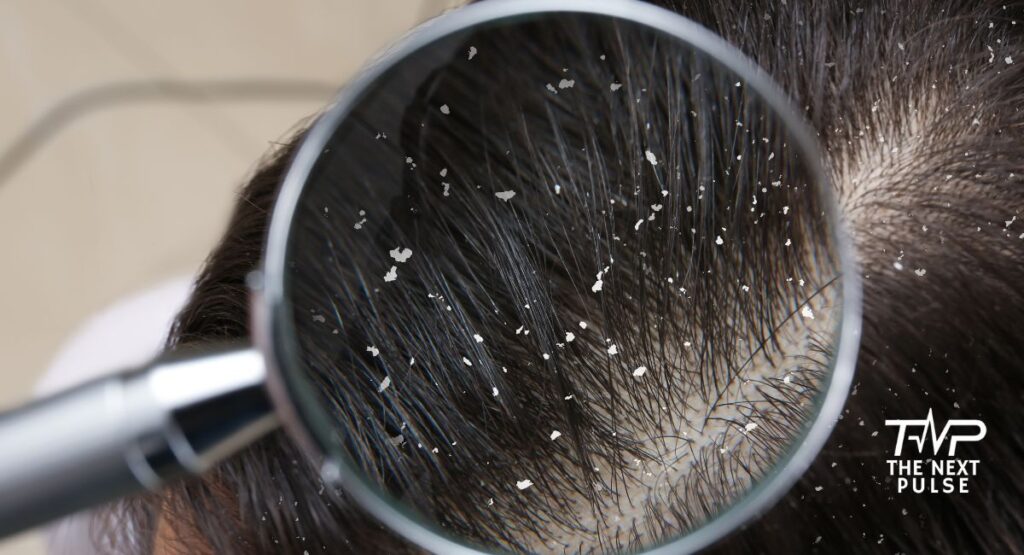
Say Goodbye to Dandruff
Nothing ruins your confidence faster than spotting white flakes on your shoulders during a meeting, a date, or even in the mirror before heading out. Dandruff isn’t just about looks—it’s itchy, uncomfortable, and frustrating. But here’s the good news—dandruff is treatable. With the right mix of dermatologist-approved treatments, natural remedies, and lifestyle changes, you can finally say goodbye to flakes and get your scalp back in balance.
